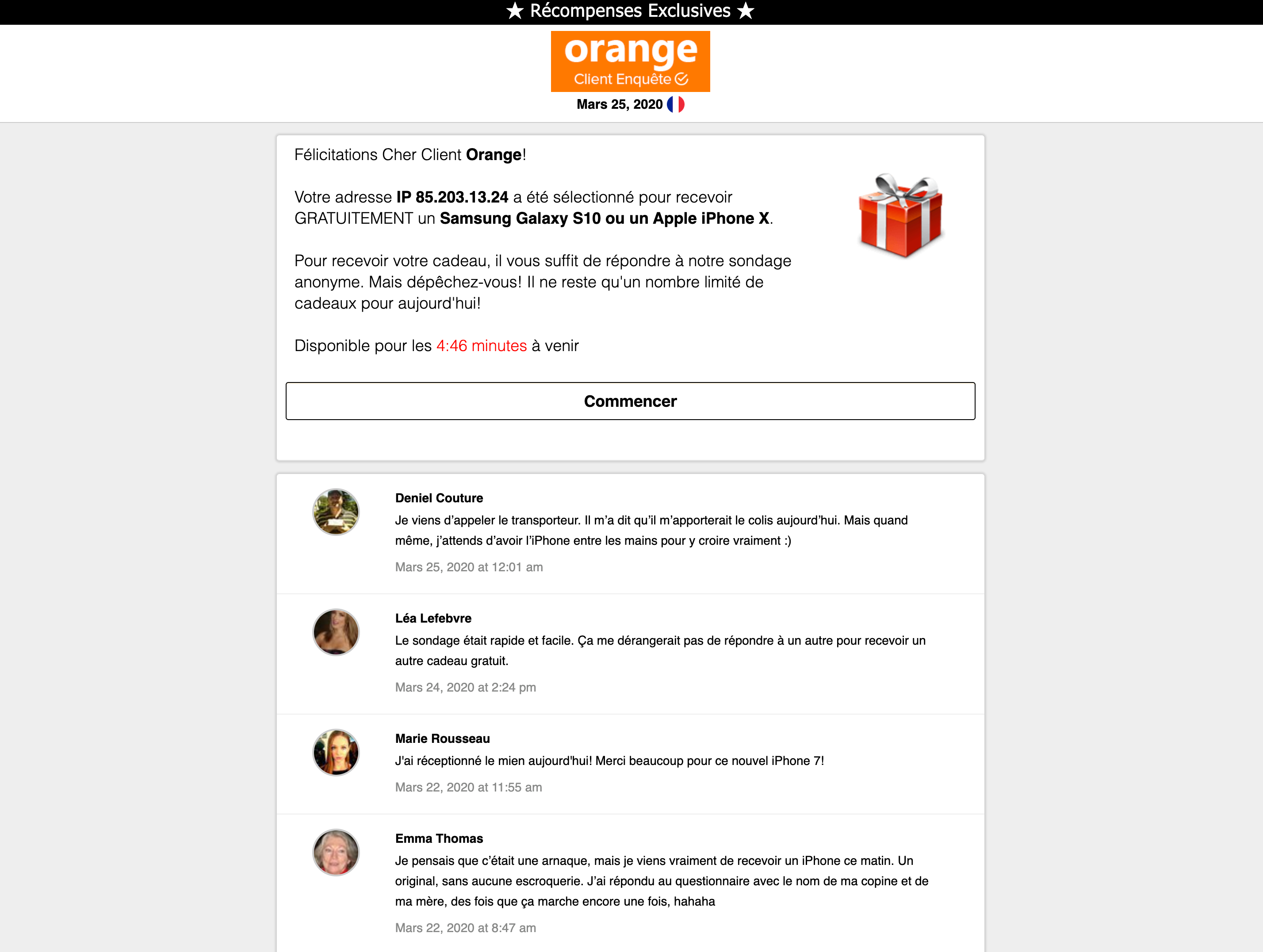How do $ 1 smartphone or $ 1 Macbook scams work?
Why are so many people still being fooled by the famous 1 euro iPhone scam?
Well, because very often, as we are going to find out, the 1 euro product is not presented as a gift fallen from the sky, but as a reward offered to the Internet user in exchange for an action he has taken. (for example, taking a survey).
We moved away from the classics “Congratulations, you are the 100th visitor to the site” (which no longer fools many people) to move towards much more subtle mechanisms: those of “the exchange of good practices” → “I give of my time by taking a survey. The action I have taken allows me to be rewarded. ”
How do these scams work?
First point : the companies behind these scams use (illegally) a well-known brand to inspire maximum confidence in the Internet user. Internet users who contact us following these scams often explain to us that they had initially clicked on links (in newsletters, on advertisements or other) linked to major brands: Orange, SFR, Lidl, Amazon and many more. others ...
Second point: offer a “deal”, that is to say, not just a gift for a gift but a reward in exchange for an action (respond to a survey, a poll…).
Third point: simulate scarcity by giving the impression that the offer is limited (example: “more than 3 phones available” or “offer valid for another 4 minutes”) + display fake comments from people who have received said iphone after completing the survey.

- The little phrase under the phone indicating that it is not a gift but a participation in a raffle to maybe win a phone
- The block of text (Terms and Conditions style) which specifies that it is a commitment for any service of a few days which will lead to a subscription
Yes, when you see the page like that, it's pretty obvious that it's not a giveaway. But these are all the steps before, which have conditioned the Internet user, which explain why the Internet user will enter his bank details here without even reading the different blocks of text.
1 euro smartphone scam: what happens next?
Well in accordance with what we have just detailed previously, the user finds himself subscribed, without even knowing it, to any online service: this can range from sports coaching to cooking classes, including a vague online gaming platform ...
From the month following their participation in the survey, the Internet user notices monthly withdrawals of more or less 30 euros for a service he did not request. Obviously the title of the direct debit displayed on its statement does not include the name of the big brand (here in our example: Orange).
This type of scam is very common. Fortunately there are solutions for Internet users. For identify and stop withdrawals, get a refund following a scam, or even here, via the direct debit search engine
of our site, to obtain information on the origin of the debits.
To go further on our website:
Our site tries to list as many names of unknown samples as possible to help Internet users identify and stop unwanted charges.
Recognize unknown CB direct debits
Unsolicited bank account charges: what to do?
New charge on my bank card: where does it come from?
Where does this CB charge come from? How to know its origin?
Unwanted subscription: how to cancel the bank charges?
Cheap Airpods and Hidden Subscriptions: The Goodyscount Case Study
Identify and terminate an unknown bank charge
Bank debit problem: stop this direct debit
Unknown credit card charge problem: what can I do?
How to identify and stop this flow?
How to stop an unwanted bank charge?








